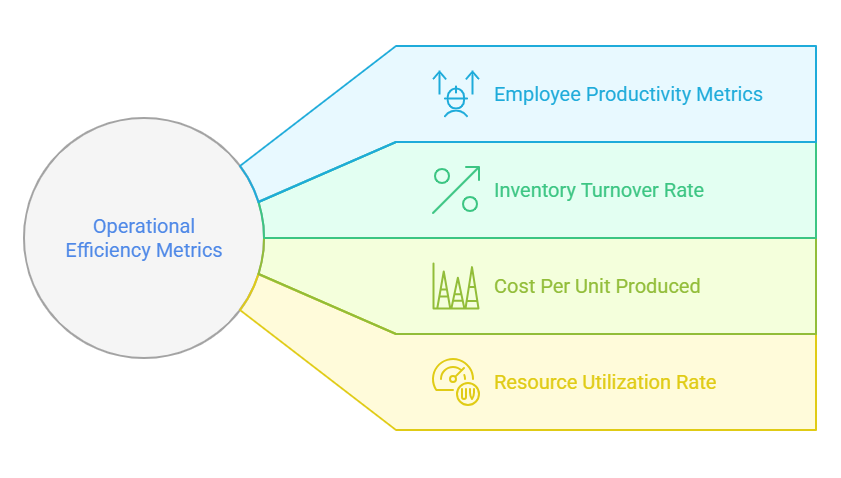Running a successful business requires more than just intuition and hard work. Today's competitive marketplace demands data-driven decision making, and that starts with understanding which metrics truly matter. The 7 metrics every business owner should track can make the difference between thriving and merely surviving in your industry.
Whether you're managing a small retail shop or scaling a service-based company, these fundamental indicators provide the insights needed to optimize operations, boost profitability, and secure long-term growth. Let's explore the essential metrics that can transform how you view and manage your business.
Revenue and Profit Margin Fundamentals
Understanding your revenue and profit margin fundamentals forms the foundation of business success. These core financial indicators reveal how effectively your business generates income and controls costs.
- Gross Revenue Tracking: Monitor total income before expenses to identify seasonal patterns and growth trends that may influence your financing needs
- Net Profit Margins: Calculate the percentage of revenue remaining after all expenses to gauge overall business efficiency and profitability
- Monthly Revenue Consistency: Track month-to-month revenue stability to anticipate cash flow challenges and plan for operational expenses
- Revenue Per Customer: Measure average customer value to identify opportunities for upselling and service improvements
Customer Retention Metrics That Drive Growth

Customer retention metrics provide valuable insights into long-term business sustainability and growth potential. These indicators help you understand customer loyalty and lifetime value.
- Customer Retention Rate: Track the percentage of customers who continue purchasing over specific periods to measure satisfaction and loyalty
- Customer Lifetime Value: Calculate total revenue expected from each customer relationship to guide marketing and service investments
- Repeat Purchase Frequency: Monitor how often customers return to identify patterns that could inform inventory and staffing decisions
- Customer Acquisition Cost: Measure the total cost of gaining new customers to ensure marketing efforts generate positive returns
Cash Flow and Buffer Management
Effective cash flow and buffer management ensures your business can weather unexpected challenges while maintaining operational stability. These metrics help you maintain adequate working capital.
- Operating Cash Flow: Track cash generated from core business operations to understand your ability to fund daily activities without external financing
- Cash Buffer Ratio: Maintain reserves equal to 2-3 months of operating expenses to handle seasonal fluctuations or unexpected costs
- Accounts Receivable Turnover: Monitor how quickly customers pay outstanding invoices to identify potential collection issues
- Days Sales Outstanding: Calculate average time to collect payments to improve cash flow forecasting and collection processes
Operational Efficiency Indicators

Operational efficiency indicators reveal how well your business converts inputs into profitable outputs. These metrics help identify areas where improvements could significantly impact your bottom line.
- Employee Productivity Metrics: Measure output per employee or per hour to identify training opportunities and optimize workforce allocation
- Inventory Turnover Rate: Track how quickly products sell to minimize carrying costs and reduce waste from unsold merchandise
- Cost Per Unit Produced: Calculate total production costs divided by units to identify opportunities for economies of scale
- Resource Utilization Rate: Monitor equipment, space, or service capacity usage to maximize return on fixed investments
Performance Growth Metrics
Performance growth metrics help you measure progress toward long-term objectives and identify trends that could impact future success. These indicators guide strategic planning and investment decisions.
- Month-over-Month Growth Rate: Compare current performance to previous periods to identify positive trends and potential concerns early
- Market Share Indicators: Track your position relative to competitors to understand competitive advantages and threats
- Goal Completion Rate: Monitor progress toward specific business objectives to ensure strategic initiatives stay on track
- Return on Investment: Calculate returns from major business investments to guide future resource allocation and expansion decisions
Tracking these essential metrics empowers business owners to make informed decisions that drive sustainable growth and profitability. By monitoring revenue consistency, profit margins, customer retention, and maintaining adequate cash buffers, you'll build a more resilient and successful operation.
Remember that effective metric tracking requires consistent measurement and analysis. Start with the metrics most relevant to your industry and business model, then gradually expand your monitoring as you become more comfortable with data-driven decision making. The insights you gain will help you navigate challenges, capitalize on opportunities, and build the thriving business you envision.

.png)






